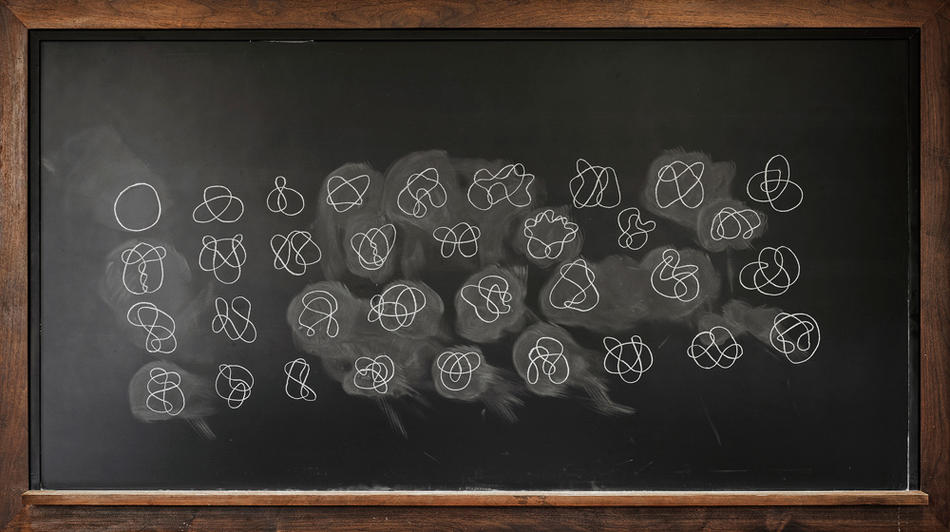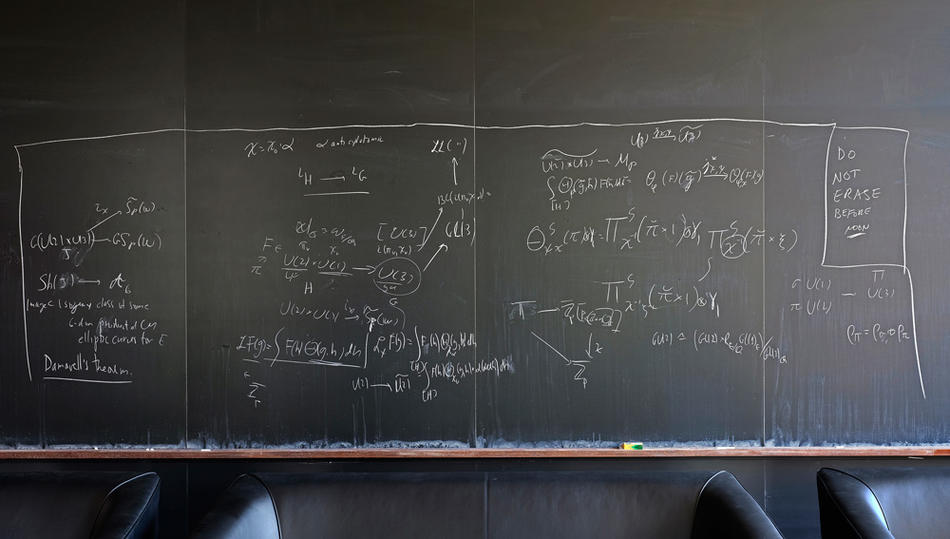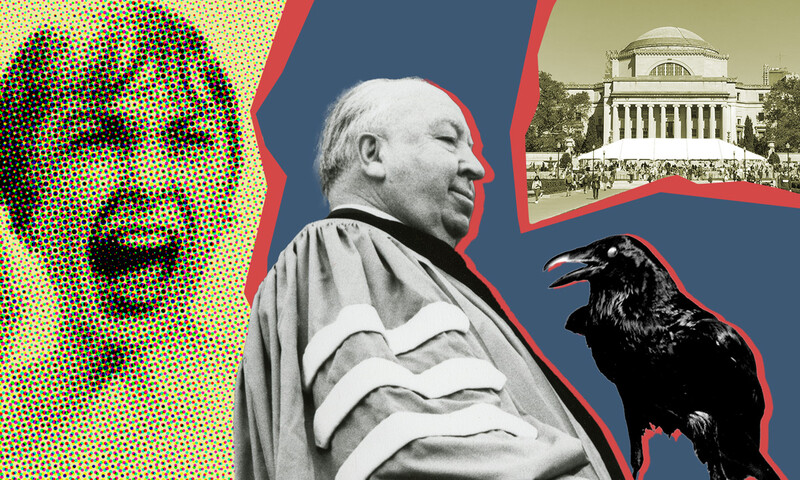For her forthcoming book Do Not Erase, photographer Jessica Wynne shot the blackboards of dozens of scholars, including Columbia mathematics professor Michael Harris and physics student Sahar Khan. The formulas on Harris’s board (below) belong to a branch of number theory called automorphic forms and were the response to a problem posed by a graduate student. Khan’s board (above) shows mathematical objects called knots, used in string theory. For Khan, drawing on chalkboards is “a process of understanding or eliminating my own misconceptions or suspicions about a topic,” she says.
Harris prefers the old limestone-on-slate technology to whiteboards (“I don’t much like the smell of the markers”) and electronic boards (“They have a tendency to crash, in my experience”). “I know of no better way to share and discuss complicated information,” he says.
But he does not claim the visual flair of colleagues whose boards “can be enjoyed for their pictorial qualities by viewers who know nothing about mathematics. I have never been artistically inclined,” Harris says. “My use of the blackboard is purely functional.”
This article appears in the Winter 2019-20 print edition of Columbia Magazine with the title "The Writing on the Wall."




